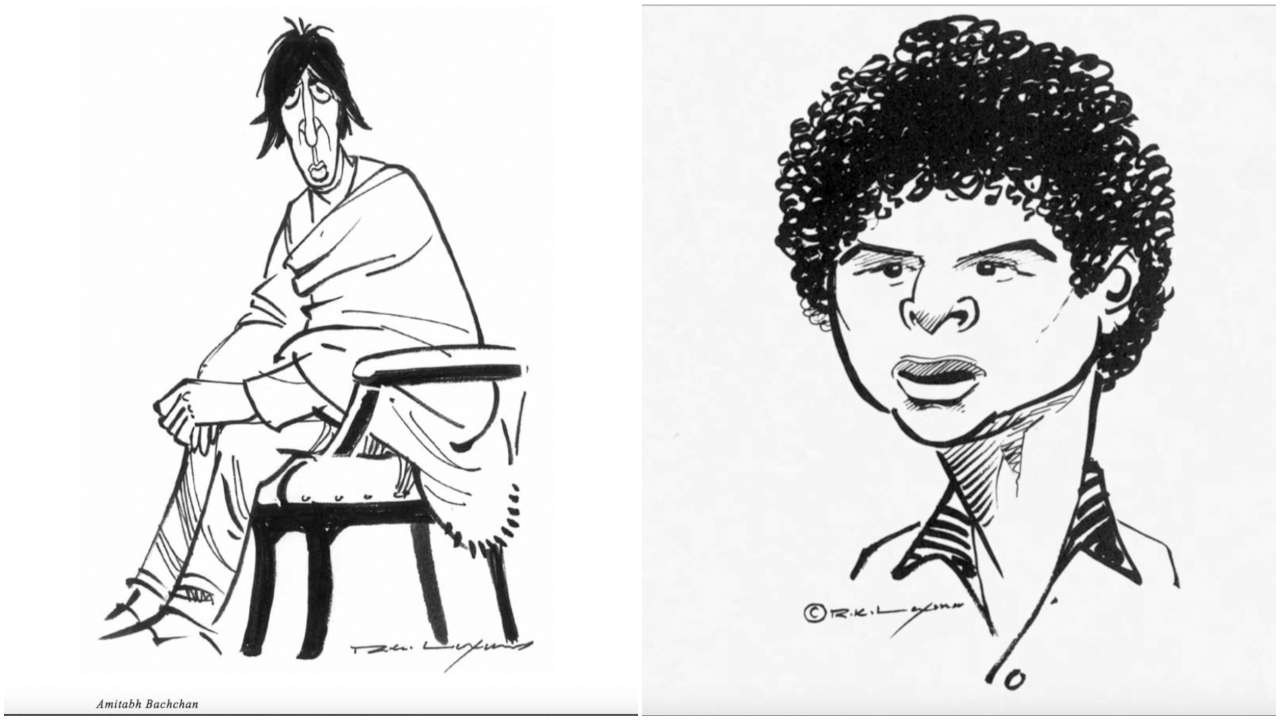
I don’t like coffee table books. Showy, superficial, wrist-wrenching. You go through the heavy tome once. Then it gathers dust.
But Timeless Laxman (2018, RK IPR Management Pvt Ltd) stunned me. Lovingly conceptualised and created by Usha Laxman, the artist’s daughter-in-law, edited by granddaughter Rimanika, and designed by Spenta Multimedia, this is a volume you will keep returning to and find fresh (in)sights. Size, paper, font, design, colour, word, visual — all do justice Laxman’s genius as a cartoonist/caricaturist par excellence, letting you glimpse the man behind the brush, and the world it conjured up.
Timeless Laxman got me a bit lost in the time past, remembering how I went to interview him for Past Forward, my little book about the childhood of Indian artists. It was unnerving to find every eye in the huge Times of India newsroom looking at the man emerging from his cloistered den. He greeted me with the smile of a family friend, and the moue of a pestered Puck: “Don’t ask damn fool questions about where I get ideas. As if you can understand even if I explain!”
No, Laxman did not welcome visitors, especially before his daily deadline. Fellow cartoonist Mario Miranda disclosed how once Laxman directed a visitor who did not recognise him through long tortuous corridors ending near the toilet. He escaped from the fan who recognised him by saying ruefully, “Always get mistaken for Laxman! Frustrating!” He laughs at himself in the sketch of his own disgruntled face poked into his office cabin occupied by strangers. But one of them turns out to be Sir David Low, the cartoonist he admired.
Timeless Laxman captures this love of mischief and misdirection in everything Laxman said, did and drew. It begins with affection, as wife, son, daughter-in-law and grandchild share memories, along with birthday cards and portraits Laxman drew for and of them: His only son cycling on the moon much before Apollo II, a portrait of wife Kamala... Passage through school and college? The pictures say it all — street scenes, public parks, mooing cows, loitering donkeys, schoolboy clutching his back as the grim teacher waves his cane. Unexpected bonus? Laxman’s early work in Blitz: Comic documentaries of murders, manhunts and shootings. But even this is infused with tongue-in-cheek sparkle.
Laxman is remembered for co-creating the world of Malgudi, drawing a parallel visual story in brother RK Narayan’s novels. A sketch in Timeless Laxman has the scaff-raff, including a man with a monkey, queuing at the door firmly shut, behind which Narayan is writing. Creditors? No! Characters! (Usha says Laxman first drew all the animal characters before wife Kamala turned them into ‘Thama the Elephant’ stories).
Laxman saw celebrities as characters, caricaturing them to reveal their hidden dimensions: Hangdog Amitabh Bachchan, antennae-up Homi Bhabha, grinning Nelson Mandela, glowering MC Chagla, Sachin Tendulkar with flaring nostrils, an eerily fleshly Pandit Ravi Shankar, wrapped in a cave man blanket... The book draws from the 60 portraits Laxman drew for his father-in-law’s 60th birthday.
As a child, Laxman loved to look at the world through bits of coloured glass. He continued this kaleidoscope game with his ingenious creation: The Common Man. Says RKL, “A political cartoonist should not be an activist or a propagandist. His mission is to show people how ridiculous they are in a particular situation.” Sucked into mayhem, he has nothing but the elixir of humour to survive poverty, corruption, drought and strife. Through decades, Laxman showcased his endless struggle, endless mystification.
The ‘Sultan of Satire’ knew disillusionment. After his stroke, ‘You Said It’ moved to an inside page, the Common Man digitally modified for a prestigious publication. Usha promised RKL, “I’ll make sure your work is authentically preserved.” She found unexpected support from chief ministers, and PM Narendra Modi promptly answered her mail — which she thought would be junked unceremoniously — met and advised her to digitise Laxman’s work and perpetuate his legacy. A museum in Pune will house and memorialise RKL’s work. Her company preserves his ouevre with exhibitions, publications and web series. She hopes her collaboration with Latha Rajnikanth to introduce cartooning skills in schools will eventually solidify as ‘RK Laxman’s Cartooning Academy’.
Usha singles out compassion as his strength: “He went through the pain of the common man.” Fellow cartoonists deemed him naive, verbose, old fashioned. “Doesn’t take the debate forward”(OV Vijayan). “No comment, only statement” (Ravi Shankar). “Doesn’t provoke readers” (Abu Abraham). True, Laxman remained decent to the end. Never hit anyone below the belt. He simply saw us as we are, he drew us as we fare.
Author is a playwright